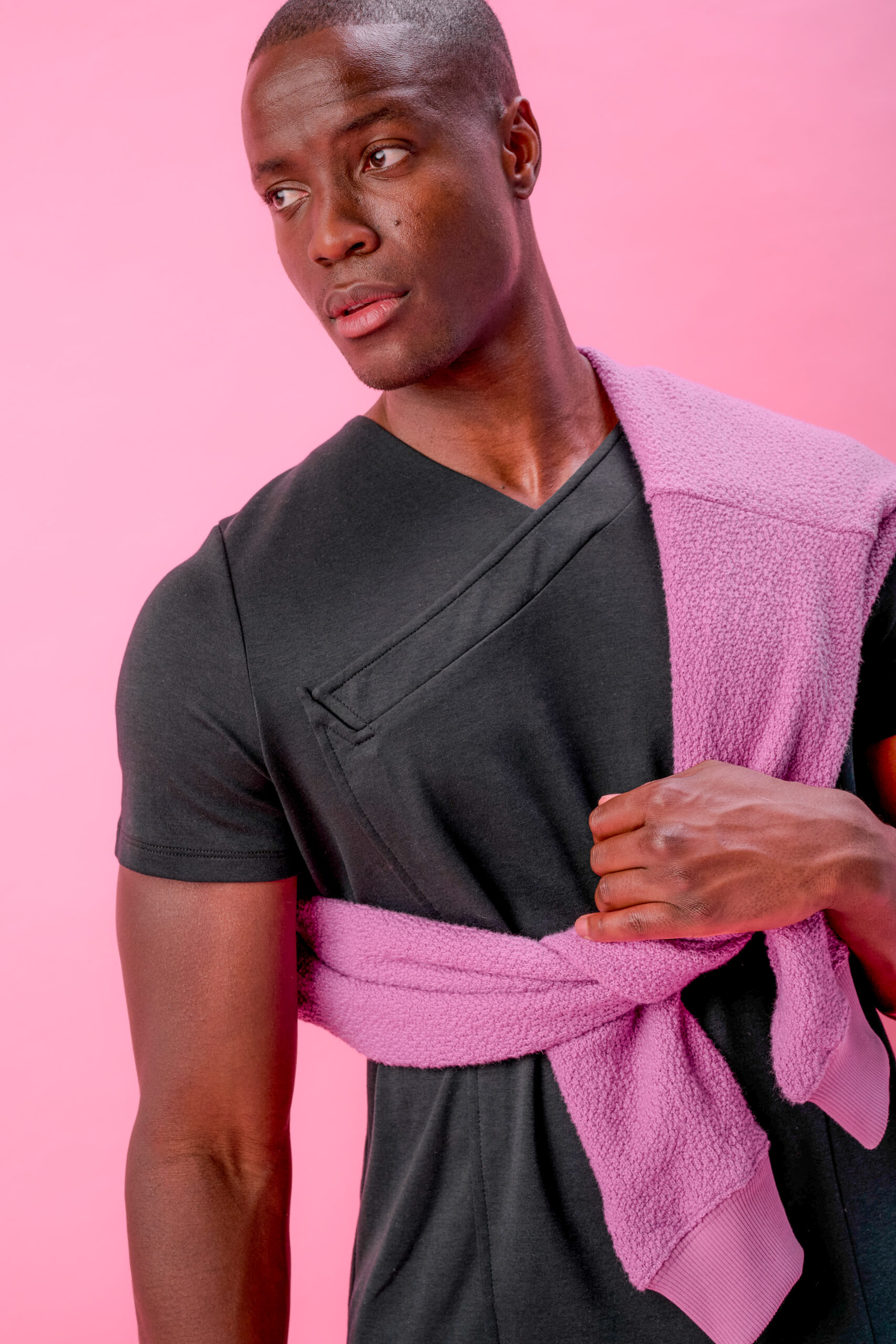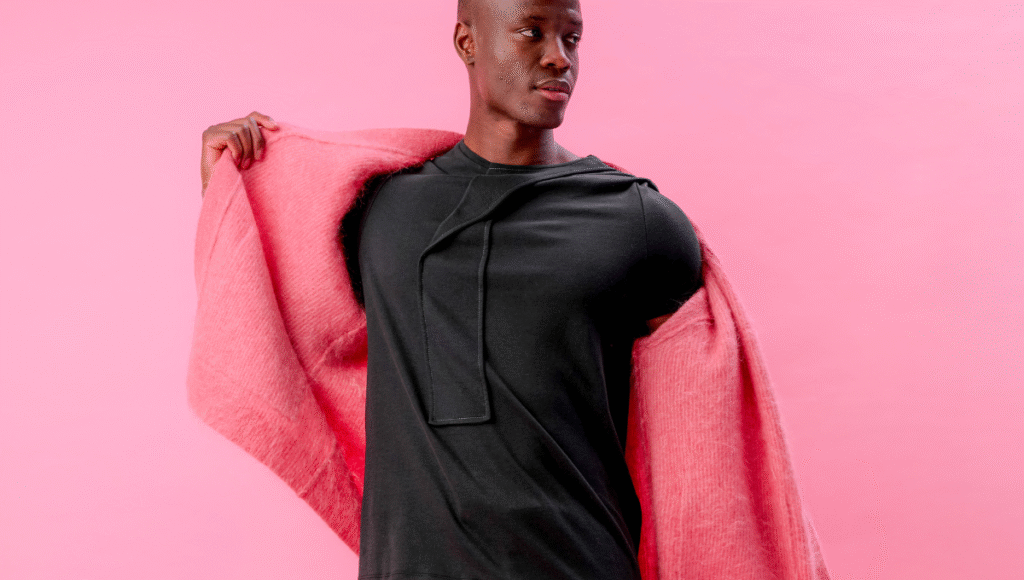Both promise comfort, but which one will actually keep you feeling fresh all day?
The debate between Supima cotton Vs linen has been going on for ages, and for good reason, both fabrics have passionate followers who swear by their chosen material.
In this comprehensive guide, we will break down everything you need to know about these two essential fabrics.
You’ll discover which one truly offers superior comfort, breathability, and value for your wardrobe.
By the end, you’ll have all the information you need to make the right choice for your lifestyle and preferences.
What Makes Supima Cotton Special?
Let me start with a confession: I used to think all cotton was basically the same.
That was before I discovered Supima cotton and experienced the difference firsthand.
Supima cotton is a high-quality type of cotton that is made from Gossypium barbadense. It is considered to be one of the softest and strongest forms of cotton in the world, and there’s science behind why it feels so luxurious making it a top choice for premium cotton T-shirts.
The name “Supima” comes from “Superior Pima,” and it represents only about 1% of all cotton grown in the United States.
This exclusive cotton variety has fibers that are 35% longer than regular cotton.
These longer fibers translate to several key benefits:
- Superior softness that actually improves with each wash
- Enhanced durability that keeps garments looking new longer
- Better colour retention so your clothes don’t fade quickly
- Reduced pilling compared to standard cotton
The quality standards for Supima cotton are incredibly strict.
Every step from growing to manufacturing is monitored to ensure you’re getting the genuine article.
This attention to detail is why many luxury brands choose Supima cotton for their premium collections.
Understanding Linen: The Ancient Comfort Fabric
Linen has quite the pedigree, it’s been keeping people comfortable for over 4,000 years.
Made from flax plant fibers, this natural material has earned its reputation as the ultimate hot-weather fabric.
100% linen is celebrated for its exceptional breathability, making it an ideal choice for warm weather. The loosely woven fibers allow air to circulate freely, keeping the body cool and comfortable.
Here’s what makes linen unique:
The flax fibers used to create linen are naturally hollow, which gives the fabric its incredible breathability.
This structure allows air to move freely through the material, creating a natural cooling effect.
Linen also has some interesting characteristics that set it apart:
- Natural antimicrobial properties that resist odours
- Moisture-wicking abilities that keep you dry
- Strength that increases when wet
- A relaxed aesthetic that’s effortlessly stylish
The texture of linen is distinctive too.
Those slight irregularities in the weave aren’t flaws, they’re what give linen its characteristic relaxed, lived-in look that gets better with age.
Also Read:- Can You Wear a T-Shirt to Work?
Breathability Battle: Which Fabric Wins?
When it comes to staying cool, both fabrics have impressive credentials, but they work differently.
Supima Cotton’s Breathability
Supima cotton is also very breathable, with high moisture-wicking abilities and low heat retention.
The finer weave of Supima cotton creates a fabric that’s lightweight yet substantial.
Supima cotton is lightweight and breathable, making it an ideal fabric choice for those who sweat heavily.
This makes it particularly good for:
- Base layers that need to manage moisture effectively
- Activewear where you need breathability without sacrificing durability
- Sleep wear for temperature regulation throughout the night
- Everyday wear in moderate to warm climates
Linen’s Cooling Power
Linen ranks highest in breathability due to its natural fibers and loose weave, ideal for hot and humid conditions.
The open weave structure of linen creates more airflow than almost any other natural fabric.
This natural fiber is not only lightweight but also excels in heat regulation. It adapts to your body’s needs, providing a refreshing barrier against the sweltering heat.
Linen excels in:
- Extremely hot weather where maximum cooling is needed
- Humid conditions where moisture management is crucial
- Relaxed settings where comfort trumps structure
- Travel wear for warm climate destinations
Comfort Comparison: Beyond Just Breathability
Comfort isn’t just about staying cool, it’s about how a fabric feels against your skin and how it moves with your body.

The Supima Cotton Experience
Supima cotton offers what I’d call “refined comfort.”
The fabric has a smooth, silky feel that’s immediately noticeable when you put it on.
The longer fibres create fewer loose ends, which means less irritation and a smoother surface against your skin.
This makes Supima cotton particularly good for:
- People with sensitive skin
- Those who prefer a polished appearance
- Situations where you need to look put-together
- Garments that will be worn close to the skin
The fabric also has excellent drape, meaning it falls naturally and moves with your body without clinging or bunching.
The Linen Feel
Linen offers a completely different comfort experience.
It has more texture and structure than cotton, with a slightly rougher feel that many people find appealing.
The fabric starts relatively crisp but softens beautifully with wear and washing.
Linen’s comfort benefits include:
- A relaxed fit that doesn’t cling to the body
- Natural texture that feels interesting against the skin
- Freedom of movement due to the loose weave
- A casual aesthetic that looks effortlessly stylish
However, linen does wrinkle easily, which some people love (it’s part of the relaxed charm) while others find it impractical for certain situations.
Also Read:- Does Supima Cotton Shrink
Durability and Maintenance: The Long-Term View
Both fabrics are known for their longevity, but they age differently.
Supima Cotton Durability
Supima cotton ‘s longer fibers create stronger yarn, which translates to longer-lasting garments.
The fabric maintains its shape well and becomes softer with each wash without losing its integrity.
Maintenance is straightforward:
- Machine washable in most cases
- Colours stay vibrant longer
- Minimal special care required
- Maintains appearance with regular wear
Linen’s Longevity
Linen is incredibly durable, some linen garments can last decades with proper care.
The fabric actually gets better with age, developing a beautiful patina and becoming increasingly soft.
However, linen does require a bit more consideration:
- Benefits from air drying when possible
- May need ironing if you prefer a crisp look
- Should be stored properly to prevent excessive wrinkling
- Some shrinkage may occur with hot washing
Seasonal Considerations
Summer Supremacy
For peak summer heat, linen generally takes the crown.
Its exceptional breathability and cooling properties make it the go-to choice for very hot, humid days.
However, Supima cotton isn’t far behind and offers a more polished look if you need to maintain a professional appearance.
Year-Round Versatility
Supima cotton wins for versatility.
While linen is primarily a warm-weather fabric, Supima cotton works well across multiple seasons.
You can layer it in winter and wear it solo in summer.
This makes it a better investment if you’re looking for pieces that will work year-round.
Cost Considerations and Value
Both fabrics command premium prices, but for different reasons.
Supima cotton’s cost reflects its superior quality and the strict standards maintained throughout production.
You’re paying for exceptional softness, durability, and the assurance of genuine Supima certification.
Linen’s price comes from the labor-intensive process of turning flax into fabric.
Quality linen requires skilled craftsmanship and careful processing.
From a value perspective, both fabrics offer excellent cost-per-wear if you choose well-made garments.
They’ll last years with proper care, making them worthwhile investments.

Making the Right Choice for Your Lifestyle
The decision between Supima cotton and linen ultimately comes down to your personal preferences and lifestyle needs.
Choose Supima cotton if you:
- Want versatility across seasons
- Prefer a polished, refined appearance
- Have sensitive skin
- Need low-maintenance care
- Value colour retention
- Want excellent durability with softness
Choose linen if you:
- Live in a very hot climate
- Love the relaxed, effortless aesthetic
- Don’t mind (or actually prefer) wrinkles
- Want maximum breathability
- Enjoy fabrics with natural texture
- Prefer sustainable, traditional materials
The W. Rubens Advantage
At W. Rubens, we understand that choosing the right fabric is about more than just comfort – it’s about finding pieces that fit your lifestyle perfectly.
Our carefully curated collection focuses on quality materials that deliver both style and substance.
When you’re investing in premium fabrics like Supima cotton or linen, you want to ensure you’re getting authentic, well-constructed garments that will serve you well for years to come.
The attention to detail in sourcing and construction makes all the difference in how these fabrics perform in real life.
Conclusion
Both Supima cotton and linen offer exceptional comfort, but they excel in different areas.
Supima cotton provides refined comfort with excellent versatility, making it ideal for those who want premium quality with easy care.
Linen offers unmatched cooling properties and a relaxed aesthetic that’s perfect for hot weather and casual styling.
The best choice depends on your climate, lifestyle, and personal preferences.
Many people find that having both in their wardrobe gives them the flexibility to choose the perfect fabric for any situation.
Whether you choose the silky sophistication of Supima cotton or the breezy comfort of linen, you’re investing in quality fabrics that will keep you comfortable and stylish.
The decision between Supima Cotton Vs Linen ultimately comes down to understanding which fabric aligns best with your comfort priorities and daily needs.
Frequently Asked Questions
Q. Is Supima cotton worth the extra cost compared to regular cotton?
Absolutely. Supima cotton’s longer fibres create softer, stronger, and more durable garments that maintain their quality and colour much longer than regular cotton, making it excellent value long-term.
Q. Does linen shrink when washed?
Linen can shrink slightly, especially with hot water washing. To minimise shrinkage, wash in cool water and air dry when possible. Pre-shrunk linen reduces this concern significantly.
Q. Which fabric is better for people with sensitive skin?
Supima cotton is generally better for sensitive skin due to its smooth texture and fewer loose fibres. However, linen’s natural antimicrobial properties also make it suitable for most sensitive skin types.
Q. Can you wear linen in professional settings?
Yes, but it depends on your workplace culture. Well-tailored linen pieces can look very sophisticated, though the natural wrinkle tendency means linen works better in more relaxed professional environments.
Q. How do you care for Supima cotton garments?
Supima cotton is quite low-maintenance. Machine wash in cool to warm water, tumble dry on low heat, and iron if needed. The fabric actually becomes softer with proper washing over time.







